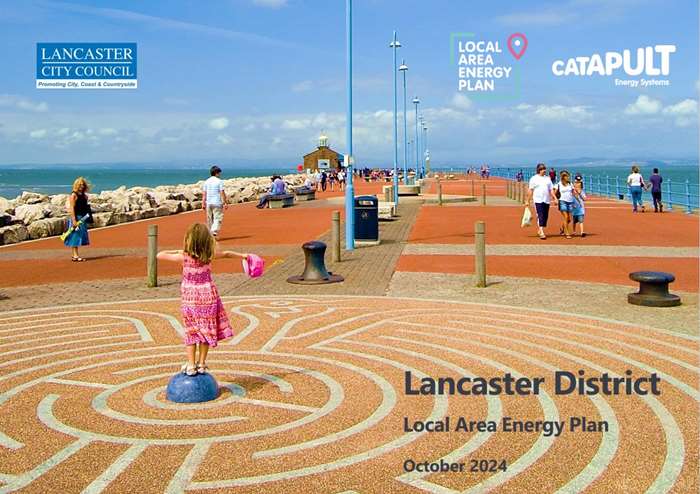Local Area Energy Plan adopted by Lancaster City Council
Lancaster City Council has adopted a pioneering new strategy that aims to shape future energy planning, reduce carbon emissions and support economic prosperity.

Front cover of the Local Area Energy Plan
On Tuesday (October 22) the council’s cabinet approved a Local Area Energy Plan (LAEP), which sets out a long-term vision for decarbonising the district by 2040 and looks beyond the council’s own 2030 target for its direct activities.
The LAEP sets out the changes required to transition the Lancaster district energy system and built environment to net zero while also addressing fuel poverty. It details what changes are required, where, when and by whom.
It also provides a high-level overview of the likely scale of investment that will be required to achieve net zero.
This includes:
- Domestic fabric upgrades - 38,000 domestic properties (approximately 54% of all buildings) are recommended to be retrofitted with fabric upgrade measures
- Low carbon heating – installing heat pumps to 52,000 – 65,000 properties and having approximately 75% of non-domestic building floorspace being heated by heat pumps in the future
- Installation of electric vehicle charge points - The LAEP recommends the deployment of up to 1,250 public charge points to plug the gaps. It is estimated that 45% of households will not have the ability to charge at home
- Local renewable generation - The district has a significant opportunity to generate renewable energy locally from solar PV and onshore wind. Up to 575 GWh of annual generation is recommended
- Energy Networks: The plan illustrates the importance of investment in the electricity network to ensure there is capacity for the rapid growth of low carbon technologies. The council has been working closely with Electricity North-West to develop the LAEP
Councillor Paul Stubbins, cabinet member with responsibility for climate action, said: “The city council set itself an ambitious target to decarbonise its services by 2030 and we are well on the way to delivering on that aim.
“The next step is to set out how the whole district can transition to a low carbon future, and that’s what the LAEP is all about. But it’s not just a blueprint for reducing emissions, it’s a vision for a sustainable future and supporting the local economy.
“The city council will need to collaborate closely with key local stakeholders along the way but this is an exciting start to delivering a net zero district.”
To find out more about the plan visit Lancaster.gov.uk/laep .
Last updated: 24 October 2024
